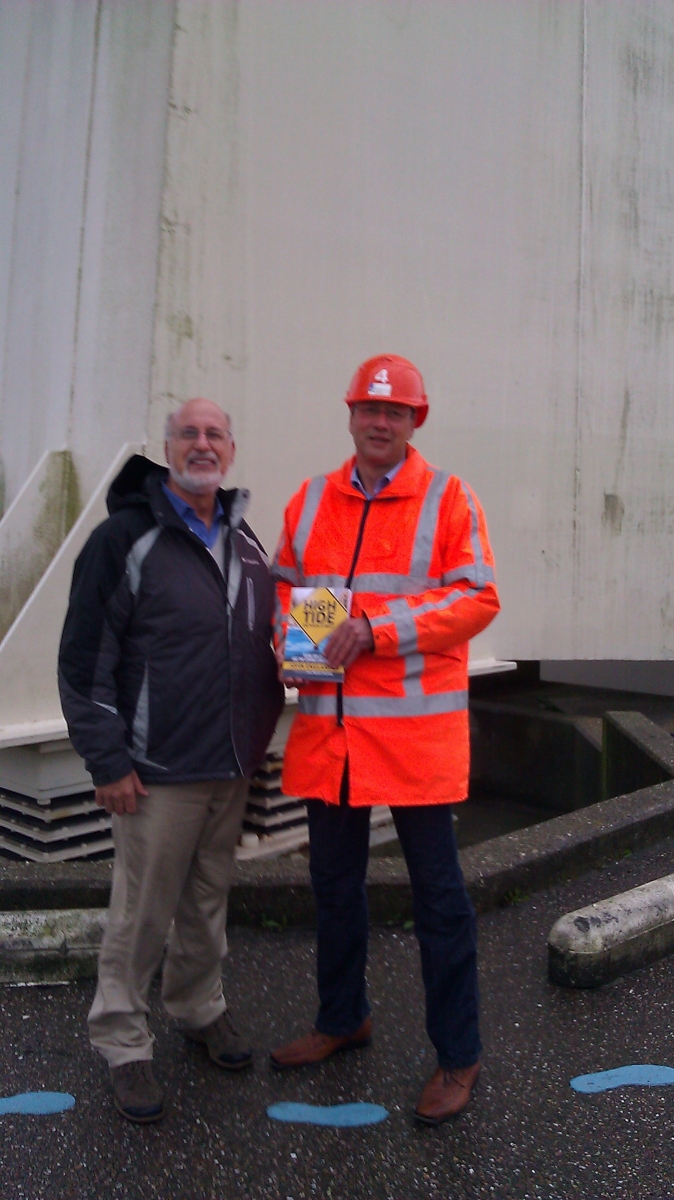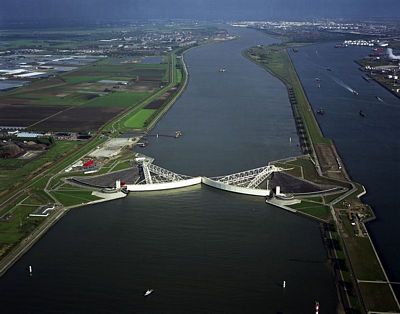Visiting Dutch Coastal Defenses Makes a Big Impression
Today is the last day of our week long study group to the Netherlands to share concepts about coastal defense. It has been an incredible experience. Yesterday we visited the huge Maeslant Barrier built to protect the Port of Rotterdam from storm surge and sea level rise. For a sense of scale, the latticed support structure behind each of the two gates is the same size as the Eiffel Tower. (Photo courtesy of Rijkswaterstaat – the Dutch government agency in charge of water.)
Each gate is 240 meters long (787 feet). It takes two hours to close the gates and flood them with water so that they submerge to close the waterway. They are automatically activated when the water height is 3 meters (10 feet) above normal. They made a strategic decision that the operation would be initiated by computer to avoid the human responsibility for exactly when to close the gates.

Seeing this structure and other parts of Delta Works first hand gives one a very strong impression that technology can do some amazing things to defend against storm surge and rising sea level. On the other hand, even the Dutch recognize that there are limits to what can be defended. Forecasts for sea level are now much higher than when the Delta Works system was designed. They are already looking at future situations that may exceed the design parameters.
When one visits the Netherlands it becomes very clear that one of their strongest foundations goes back to the tragedy of February 1, 1953 when a North Sea storm killed more than 1800 people overnight. That event led to a national resolve that such a thing must never happen again. This led to the Delta Works program of 1957. The Maeslant Barrier shown here was a major technology element of the solution. Elsewhere the country implemented higher dikes and river barriers.
The entrance to Rotterdam posed a special challenge. As Europe’s busiest port and a huge part of the Dutch economy, the storm surge protection must not create any delay for shipping, yet must be put in place reliably and quickly. North sea storms can arise with only a few hours notice. The Maeslant Barrier was the solution. Construction began in 1991 and was completed in 1997.
I will do another post about some of the other aspects of the defenses when I have returned to the US and had a little more time to catch up on my writing. More information about the Maeslant Barrier and other aspects of the Delta Works can be found at their website.

